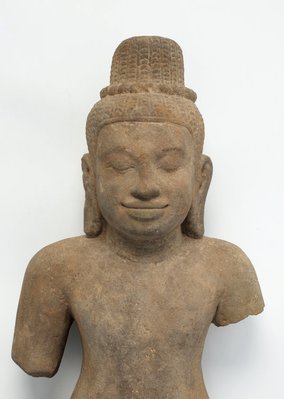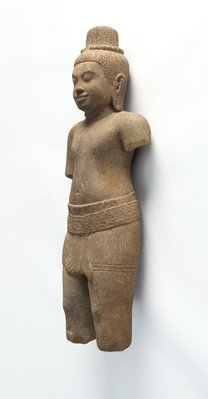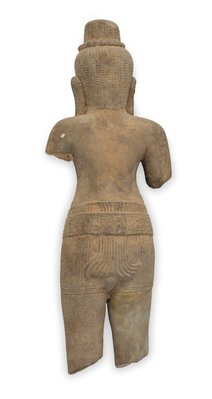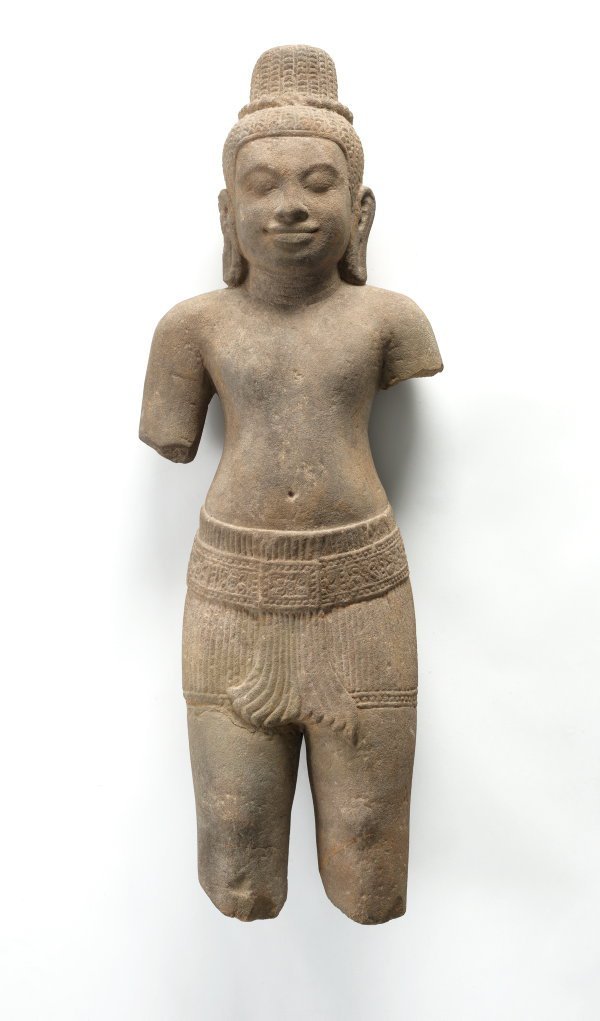


-
Details
- Place where the work was made
-
Lopburi
→
Thailand
- Cultural origin
- Khmer empire
- Period
- Lopburi period 900 - 1300 → Thailand
- Date
- 13th century
- Media category
- Sculpture
- Materials used
- stone
- Dimensions
- 94.0 x 33.0 x 18.0 cm; 54 kg.
- Signature & date
Not signed. Not dated.
- Credit
- Purchased with assistance from Mr and Mrs T. Allen, S. M. Gazal, Mollie Gowing, Bruce C. Hudson, Mr and Mrs D. Isles, J. G. Jagelman, Mr. and Mrs A. Morris, Mrs Kerry Packer, Mrs. J. Parker, Edward and Goldie Sternberg, Mr F. Storch 1988
- Location
- Not on display
- Accession number
- 398.1988
- Copyright
- Share
-
-
About
The Khmer period in Thailand, a result of the westward expansion of the Khmer empire, lasted from the eleventh to the fourteenth centuries. The period, often termed Lopburi after the town in central Chao Phya River Valley where many of the sculptures were produced, coincided with the brilliant era of Khmer art that created such architectural monuments as Angkor Wat. Lopburi sculpture is generally divided into two periods: the first, or Angkorian period (10th-12th centuries) when the Thai sculptors produced an officially recognised Khmer style; and the second or late Lopburi style when the local Thai artisans of the thirteenth and fourteenth centuries evolved a modified style of their own as the Khmer influence began to wane. This piece, most likely a Buddhist deity, belongs to the second, more significant period. It typifies in its modelling the Khmer emphasis on volume, which is further revealed in the facial features and clothing. The short 'dhoti' with its fish-tail pleat, and the wide belt decorated with incised rosette motifs, is characteristically Khmer.
'Asian Art', AGNSW Collections, 1994, pg. 181.
-
Exhibition history
Shown in 1 exhibition
The connoisseur and the philanthropist: 30 years of the Sternberg Collection of Chinese Art, Art Gallery of New South Wales, Sydney, 31 Jan 2014–27 Apr 2014
-
Bibliography
Referenced in 3 publications
-
Jackie Menzies, AGNSW Collections, 'Asian Art - India, South-East Asia, China, Tibet, Korea, Japan', pg. 173-228, Sydney, 1994, 181 (colour illus.).
-
Jackie Menzies and Edmund Capon AM, OBE, Asian Collection Handbook, Art Gallery of New South Wales, 'South-East Asian Art', pg. 83-96, Sydney, 1990, 88 (illus.), 89.
-
Jackie Menzies (Editor), The Asian Collections Art Gallery of New South Wales, Sydney, 2003, 315 (colour illus.).
-
